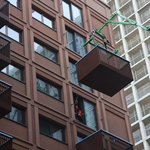Northern Light
Superstar
Not going to dive into specifics because I don’t track my trip times as best as I could when I’m in school, but I regularly ride the ion for stretches far longer than from the Universities to Conestoga; the thing is slow. It takes an hour to ride from end-to-end, at least. It’s hardly competitive with a car in this stretch, and it’s one of the few sections actually in a mostly separated ROW. The thing grinds to a halt in downtown Kitchener and uptown Waterloo, erasing the time benefits it actually does see on the more separated sections. On most days the express buses, in my case the 201, can get you to your destination just as fast.
I have yet to ride the IoN and won't dispute your perceptions on that basis. But as you got me curious, I went to the Wikipedia page for this service and it would seem to differ some from your take:





